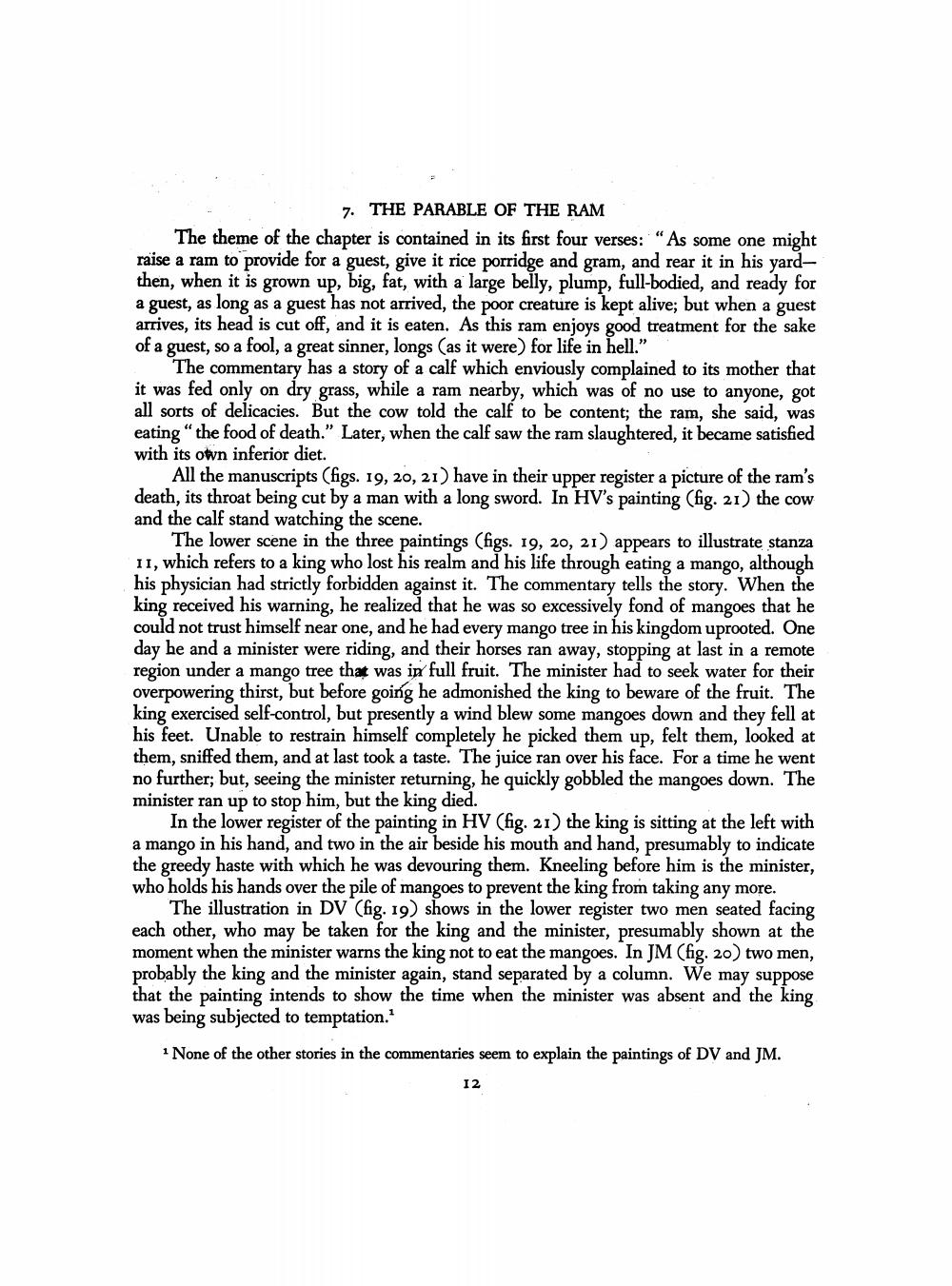________________
7. THE PARABLE OF THE RAM The theme of the chapter is contained in its first four verses: “As some one might raise a ram to provide for a guest, give it rice porridge and gram, and rear it in his yardthen, when it is grown up, big, fat, with a large belly, plump, full-bodied, and ready for a guest, as long as a guest has not arrived, the poor creature is kept alive; but when a guest arrives, its head is cut off, and it is eaten. As this ram enjoys good treatment for the sake of a guest, so a fool, a great sinner, longs (as it were) for life in hell."
The commentary has a story of a calf which enviously complained to its mother that it was fed only on dry grass, while a ram nearby, which was of no use to anyone, got all sorts of delicacies. But the cow told the calf to be content; the ram, she said, was eating the food of death." Later, when the calf saw the ram slaughtered, it became satisfied with its own inferior diet.
All the manuscripts (figs. 19, 20, 21) have in their upper register a picture of the ram's death, its throat being cut by a man with a long sword. In HV's painting (fig. 21) the cow and the calf stand watching the scene.
The lower scene in the three paintings (figs. 19, 20, 21) appears to illustrate stanza 11, which refers to a king who lost his realm and his life through eating a mango, although his physician had strictly forbidden against it. The commentary tells the story. When the king received his warning, he realized that he was so excessively fond of mangoes that he could not trust himself near one, and he had every mango tree in his kingdom uprooted. One day he and a minister were riding, and their horses ran away, stopping at last in a remote region under a mango tree that was in full fruit. The minister had to seek water for their overpowering thirst, but before going he admonished the king to beware of the fruit. The king exercised self-control, but presently a wind blew some mangoes down and they fell at his feet. Unable to restrain himself completely he picked them up, felt them, looked at them, sniffed them, and at last took a taste. The juice ran over his face. For a time he went no further; but, seeing the minister returning, he quickly gobbled the mangoes down. The minister ran up to stop him, but the king died.
In the lower register of the painting in HV (fig. 21) the king is sitting at the left with a mango in his hand, and two in the air beside his mouth and hand, presumably to indicate the greedy haste with which he was devouring them. Kneeling before him is the minister, who holds his hands over the pile of mangoes to prevent the king from taking any more.
The illustration in DV (fig. 19) shows in the lower register two men seated facing each other, who may be taken for the king and the minister, presumably shown at the moment when the minister warns the king not to eat the mangoes. In JM (fig. 20) two men, probably the king and the minister again, stand separated by a column. We may suppose that the painting intends to show the time when the minister was absent and the king was being subjected to temptation.'
None of the other stories in the commentaries seem to explain the paintings of DV and JM.
the king before hiumably t
12




